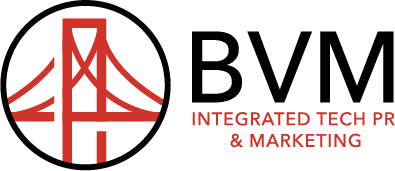The current Covid-19 pandemic has dramatically changed the landscape of advertising and PR. In a world used to planning advertising and doing PR on a quarterly or annual basis, the rules have potentially been altered forever.
For example – there are ads on television for toilet paper yet, at least at the moment, there is no benefit to placing them, as virtually every roll in every grocery store will be purchased, regardless of brand. Someone forgot to pull their budget.
Likewise, all ads promoting retail sales – restaurants, sporting events, etc., had to be quickly pulled as well. Google and Facebook have seen dramatic declines in their ad business as a result and newspapers are even worse off.

How though, should a company’s communications change these days? To learn more, we asked an expert. Michael Emerton is a founding partner of BridgeView Marketing (BVM). His company was formed in the midst of the 2006 – 2009 recession where he applied these techniques to help technology companies overcome that crisis’s adversities. Prior to BVM, in 2002, he held the position of communications secretary and spokesperson for Voice of the Faithful, a lay organization founded in the wake of the Catholic Church’s sexual abuse crisis. In this position, he used his crisis communication skills to help craft and elevate the organization’s message to top-tier broadcast and print media, often being quoted in WSJ, USA Today, Time Magazine, New York Times and the Boston Globe. Michael is also the co-author of Luke 17:2, chronicling his crisis communications process as the Church’s cover-up was exposed to the world.
How should companies adjust their communications as a result of COVID-19?
The tone and texture of the messages must change dramatically. Self-serving publicity at the expense of those impacted by a crisis will do considerable harm to an organization’s image. The 80/20 or even a 90/10 rule applies while in the beginning or middle of a crisis, where 80% or 90% of the messages convey sympathy, compassion, and hope and 20% to 10% convey trust and plausible path towards a common-ground solution.
How should communications transition once we start getting back to normal?
The state of normality is relative to the aftermath of any crisis. A crisis is often the catalyst that produces an alternate state of society—a tangent to the path once followed. A keen understanding of “The New Normal” must be embraced and applied to shift the 80/20 or 90/10 rule more in favor of the common-ground solution. The exact percentage of the message shift must occur in small amounts and gradually increase in favor of the brand. This will happen as the target audience moves from fear, doubt, and uncertainty towards acceptance and drive for protective measures to ensure future protection.

Coronavirus pandemic? What should they avoid?
Avoid the overused terms such as “in these unprecedented times,” or “these challenging times.” Beginning your message with one of these phrases introduces an instant malaise across the intended audience. The use of these terms immediately lumps any value-added communication into a, “I know I’ve heard it all before,” mindset that causes individuals to zone out at the beginning. A clear example of this was the use of “paradigm shift,” in the late 1990s to describe the benefits of a SmartSwitch or a hot-swappable chassis blade.
What messaging should they focus on?
Agencies need to help their clients find the “hero” factor or the “life convenience” aspects within their offerings, to portray how they are assisting companies and how society is adapting to the new normal. Understanding and compassion tied to a believable solution will buttress branding via positive press reinforcement. GE, a company that has received less than positive press over the past few years, has recently received a positive image boost by doubling its production capacity for ventilators and expanding its Madison, Wisconsin, production line to 24-hour operation. Understanding and action is a time-tested message that GE has adopted since they ran ads during WWII advertising their factories were ceasing to manufacture refrigerators and started producing tanks and planes.
How are you helping clients get through this crisis?
During a crisis, most organizations live on a steady diet of, “bad news for breakfast.” This bad news often comes in the form of strained financial projections. Anyone that has experienced the 2000 dot-com bubble burst knows all too well how a crisis can quickly alter positive employee outlook and cripple productivity. Companies must identify which products or services are beneficial in the crisis, such as homeworker support, e.g. Zoom, Microsoft Teams, VPNs, remote desktop support, and various cloud-based security solutions. Apply the 80/20 or 90/10 rule to communicate the solutions’ abilities to adapt and ease transitions.
Employee, stockholders, board members and partner communications cannot be overlooked. As with government officials, constant briefings must be conducted; these can take the form of digital (online broadcast, email, blog, and social media) or in-person if the situation allows.






